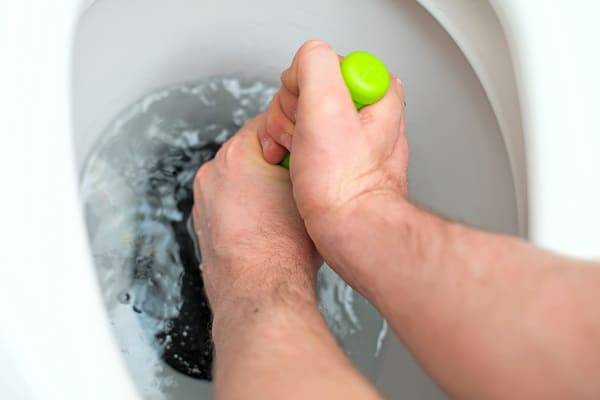
A good, fast water flow is key to a healthy toilet. This is because it is a fast flow of water that helps the suction in the actual pipe form. And it’s this suction that is largely responsible for sending waste to the sewer. A slow toilet can result from a variety of issues – and the good news is that you don’t need to be a professional plumber to troubleshoot and resolve the majority of them. Here’s a closer look at some solutions to fix a slow-moving toilet.
Plunge it
Is there a gurgling sound coming from the toilet after you flush it? If so, there’s a good chance there’s a blockage in the drain line. In most cases, simply merely plunging the toilet will clear out any blockages. In more severe blockage situations, an auger may be necessary. However, if it’s an object clogging things up, more invasive action may be required.
Clear the sewer
In some slow toilet situations, the underlying problem may extend beyond just the toilet. For instance, if the toilet continues to flush slowly after plunging it, listen for gurgling sounds coming from any other nearby drains and check to see if water or waste is coming up through basement drains. If this is the case, the sewer line may be clogged. This is best resolved with a sewer auger.
Check the flush valve
Take the lid off the toilet tank and flush the toilet, observing the speed at which the water empties after you flush. Pay particular attention to the flapper that opens as water is distributed. If it’s not lifting up into a near vertical position, it’s likely not providing as big of an opening for water to exit as it needs to be. This is a simple fix that just requires you to shorten the length of the chain from handle to the flapper.
Adjust the float
Some slow toilet issues may occur because there isn’t enough water in the tank during a flush. Peering inside the tank, check the water level before a flush. It should be no more than about an inch below the overflow tube. If it’s any lower, adjust the float accordingly.
Take preventative action
Finally, in case you want to take preventative action against a slow toilet, it’s fairly easy to clear out any deposits and sludge that may be present in the toilet, drain line, and elsewhere that could be affecting flow. Drop a tablespoon of dishwashing liquid into the overflow pipe in the tank, drain cleaner into the toilet bowl (follow instructions on the amount and make sure to administer one that is designed for toilets) and then let things sit for 10 to 15 minutes. This will be enough time for the cleaners to work their magic. After the time has elapsed, give it a flush. It should improve water flow.
Steps to Fixing a Slow Flushing Toilet:
- Plunge the toilet
- Clear the sewer
- Check the flush valve
- Adjust the float
- Take preventative action
For more information on how a toilet works, or to troubleshoot a slow toilet, contact us today.
